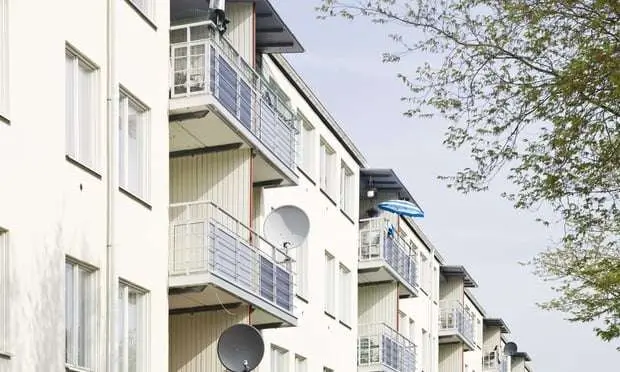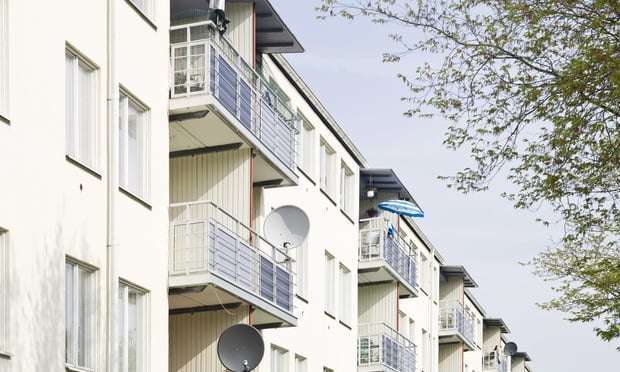
eXp Commercial is one of the fastest-growing national commercial real estate brokerage firms. The Chicago Multifamily Brokerage Division focuses on listing and selling multifamily properties throughout the Chicago Area and Suburbs.
Thursday, November 10, 2022
Why Sell

Why Should I Sell My Multifamily Property?

Why should I Sell My Multifamily Property?
There are several reasons why people do sell:
Problems: Management, Vacancy, Maintenance, Stress, Health, Debt, Neighborhood, Interest Rates
Opportunities: Strong Market Values, Alternate Investment, End of the Hold Period, Tax Savings
Changes: Divorce, Death, Retirement, Partnership Split, Relocation, Consolidation, Diversification
What do I do with the sales proceeds? I don't want to pay Capital Gains Tax!
There are several options for sellers to defer or minimize capital gains taxes:
- 1031 Exchange
- Delaware Statutory Trust/Deferred Sales Trust (DST)
- Tenancy in Common Investment (TIC)
- Installment Sale
How do I know I am getting the most money for my property?
We not only market properties for sale. We make a market for properties we represent. Each offering is thoroughly underwritten, aggressively priced, and accompanied by loan quotes to expedite the sales process. We leverage our broad national marketing platform syndicating to the top CRE Listing Sites with direct outreach to our investor database and an orchestrated competitive bidding process that yields higher sales prices.
What is my property worth?
Contact Us to discuss what information is needed to complete a Complimentary Commercial Broker Opinion of Value (BOV).
I’m not interested in selling at this time.
This is understandable as only about 5% of the market trades in any given year. We are also happy discuss any purchase or refinance interests and recommend some physical and operational changes you can make to add value to your property you will appreciate when you eventually sell.
Author:
Randolph Taylor MBA, CCIM
(630) 474-6441
rtaylor@creconsult.net
Randolph Taylor MBA, CCIM is a Multifamily Investment Sales Broker in the National Multifamily Division with eXp Commercial. Randolph focuses on the Listing and Sale of Multifamily Properties in the Greater Chicago area and Suburbs. Randolph has over 24 years of Commercial Real Estate experience including Corporate Real Estate, Asset Management, and Commercial Real Estate Brokerage. Randolph’s broad knowledge of the Commercial Real Estate Industry, financial analysis, marketing, and negotiating skills uniquely position him to provide a superior level of service to his clients.
https://www.creconsult.net/market-trends/why-should-i-sell-my-multifamily-property/Wednesday, November 9, 2022
The Keys to Multifamily Transactional Success This Year

During a quick-fire session geared towards the experienced transactional investor at the GlobeSt. Multifamily national conference Monday morning, a panel of experts examined current multifamily transactions and deconstructed various challenges and opportunities given the current state of the market.
LOS ANGELES—“We are going through a tricky time. It has never been more important to focus on the basis when looking at a transaction.” Those thoughts are according to panelist Bobby Khorshidi, president and chief credit officer at Archway Capital.
Khorshidi joined other multifamily experts during a transactions panel Monday morning at the GlobeSt. Multifamily national conference event here at the JW Marriott LA LIVE. Moderator Laurie Lustig-Bower, an EVP at CBRE, began with asking panelists what is happening with bridge debt.
Interest rates have gone up and there will be some uncomfortable conversations between lenders and their borrowers and between investment sales and their clients, explained Khorshidi. “In underwriting, we have to apply a stress test because we don’t know where things are going to go. It is hard to find deals that will pencil.”
UNDEWRITING, WHAT ARE THE METRICS?
His company is using 7% as the exit on transactions. “We are looking at construction loans that are coming due or over budget and they are looking difficult to find exit financing,” he explained. “This is a transitional period where we are going to find new footing… It will just take time to figure out the new normal.”
When underwriting deals today, James D’Argenio, senior principal of acquisitions at The Bascom Group, said that what hasn’t changed is understanding a property’s characteristics, strengths, and weaknesses. “Something that has changed is maybe the metrics, but we are really trying to stick to the basics and the stuff that we can control.”
When asked at a class A building versus a B-minus fixer-upper, and what cap rates would be looked at for each, D’Argenio said that they don’t make any money off the cap rate and are return focused. “We are trying to focus on levered versus unlevered returns…not just what is our cap rate to our coupon is because then you will be waiting a long time to transact… I don’t think that is an important metric when you are looking at the total success a project can have.”
BUYERS AND SELLERS ADJUST
Buyers and sellers have to adjust to the new normal, say panelists. Panelist Otto Ozen, executive vice president at The Mogharebi Group, said that the rapid interest rate increase created a bit of dysfunction. “Sellers historically have been relatively slow to respond to these kinds of shifts,” he said. “That is where you have the gap between buyers and sellers.”
He continued that buyers are quick to adapt their response and continue to adjust. “What is happening though is that a year ago, assumption of debt was really not an attractive option,” Ozen said. ‘What looked unattractive a year ago is being revisited.”
David Harrington, EVP and managing director of Matthews Real Estate Investment Services added that the profile of buyers right now are the ones who are able to stomach the long-term horizon.
LENDING OPTIONS
Switching gears, Lustig–Bower asked panelists about lending and what options look like for the buyer on bridge debt. Khorshidi explained that the goalpost is shifting. “We are in the business of lending and are going to lend.”
Having said that, he explained that his company needs to anticipate where the market is going. “Fundamentals and the economy feel like business as usual other than the fact that rates have moved,” he said. “Everyone will use the same criteria and the same underwriting.”
This is eerily familiar to the beginning of Covid, he continued, but then, the issue was valuation.” It is similar now. We just need to figure out the bid/ask. That is the way that we are underwriting things. The challenge is to figure out how someone is going to refinance.”
Khorshidi noted that it is a weird transitory time and it will take some time for these conversations to flush out. The pace that rates have been going up have been really extreme and has put some uncertainty in the markets and without trust in the Fed, it is hard to know where things are going. “We were told that all of this was transitory. That is not how it has played out. As lenders, and you all out there as investors, you have to guess, and whoever guesses right wins.”
Source: The Keys to Multifamily Transactional Success This Year
https://www.creconsult.net/market-trends/the-keys-to-multifamily-transactional-success-this-year/2023 State of The Commercial Real Estate Industry

2023 State of The Commercial Real Estate Industry
Join eXp Commercial President James Huang and Economist KC Conway on January 17 for a fireside chat as they discuss the state of the 2023 economy and how you can prepare your business for success in the changing market.
Date: January 17, 2023
Time: 9 a.m. PT / Noon ET
Location: eXp World > eXp Commercial Auditorium
Tuesday, November 8, 2022
September Marked Turning Point for Multifamily Rents

September Marked Turning Point for Multifamily Rents
Year-over-year rent increases slowed but are still up 8.8 percent last month.
September apartment rents are down month-over-month, in what experts from Rent.com call “a hopeful sign” the market is stabilizing.
Year-over-year rent increases slowed but are still up 8.8 percent last month; in August, rent prices increased by 12.3 percent. September also marks the first time year-over-year changes dipped into the single digits since September 2021 and the lowest year-over-year increase since October 2021.
In addition, 61 percent of state-level markets saw decreased rents in September compared to the prior month, with New York posting the largest decrease at just over 17 percent month-over-month followed by Illinois and Massachusetts at 4.6 percent and 4.0 percent, respectively. In addition, 31 of the 50 metros analyzed by Rent.com were down month-over-month, led by Cincinnati and Columbus with increases of nearly 7 and 6 percent. Median rent is also down month over month in 60 percent of markets surveyed, in what analysts call a “promising sign of a market beginning to cool.”
New York, Wisconsin, Minnesota, Massachusetts, and Oregon showed year-over-year declines, with just New York and Wisconsin down by more than a full percentage point at -10.01 percent and -7.39 percent respectively.
Jeff Adler, VP of Yardi Matrix and industry principal of self-storage at Yardi, recently told GlobeSt.com that “suburbs in major gateway metros and migration market favorites have seen greater rent growth since the start of the pandemic, but that the direction going forward is more balanced.”
Source: September Marked Turning Point for Multifamily Rents
https://www.creconsult.net/market-trends/september-marked-turning-point-for-multifamily-rents/Monday, November 7, 2022
Multifamily Fundamentals Are Still Fairly Strong Say Panelists

The GlobeSt. Multifamily national conference kicked off with standing room only, complete with a new agenda at a new venue as some of the most influential dealmakers in multifamily came together to discuss the state of the industry.
LOS ANGELES—The GlobeSt. Multifamily national conference kicked off this morning with a state of the industry panel that brought together the most influential dealmakers in the U.S. multifamily real estate market. The panelists discussed key trends, major market shifts, the impacts of inflation on the multifamily sector, the road to economic recovery, and their expectations for another record year in multifamily.
Moderated by John Sebree, SVP and national director of multifamily at Marcus & Millichap, the panel kicked things off by making one thing clear: while many are trying to figure out if we are in a recession yet or not, fundamentals in multifamily are “still fairly strong.”
Still, it is undeniable that the sector is facing some headwinds.
According to panelist Robert LaFever, managing director of development at Greystar, the company is still actively pursuing deals and are studying macro locations, he said, but is being “much more selective.”
Chad Sanderson, senior principal of business development and acquisitions at the Bascom Group, advised that the industry needs to “buckle up, because there will be pain, but you have to do what you have to do.” He also said it has never been more important than ever to study the characteristics of a particular deal because there are so many moving pieces. “A lot of things coming out on the market right now are just not trading. There are times when you can have a macro approach to markets…you have to be mindful of supply, are there specific sectors that have higher unemployment. If those things are in check, then you are looking at the specific deal… Just getting a loan right now has changed so dramatically and that is driving your underwriting.”
Sanderson added that you have to think about your strategy, think about how to mitigate risk with uncertainty and figure out how to manage your investment portfolio. “Everyone had their thoughts of how things were going to unfold. One camp said that inflation and rates will come back down but then inflation took off even further.”
Next year, the environment should stabilize, especially as interest rates are expected to level off, said panelist Jeff Adler, VP of Yardi Matrix and industry principal of self-storage at Yardi. On the rental front, panelist Adler also recently told GlobeSt.com that “Suburbs in major gateway metros and migration market favorites have seen greater rent growth since the start of the pandemic, but that the direction going forward is more balanced.”
He says that there has been a recovery in the downtown areas back to pre-pandemic levels (except for San Francisco, although rents have rebounded from their previous lows). The spread between urban and suburban living (monthly rental rates) has narrowed, as well as the spread Between Gateway and Sunbelt cities, “although it still exists,” Adler says.
We have seen an incredible shift of people to these tertiary markets, added Sanderson. “I think inflation really caught a lot of people by surprise,” added Sanderson. “We are in this new paradigm where everyone’s mood has really changed.”
We are not going back to the way things were in terms of return to office and renter profile, explained Adler. In terms of demand, it has started to tail down, as the absorption-to-completion ratio in 2022 is a sharp reversal from the strong levels of household formation a year ago. “Many of these renter suburbs belong to the Miami, Washington, D.C., and Los Angeles metros… Suburban living has been rewritten throughout the past decade.”
Kitty Wallace senior executive VP at Collier's, says that while there have been many people leaving the state of California, they are now coming back. “Los Angeles, New York, and San Francisco, have always been top markets but during Covid, they went to bottom markets,” she said. “I look at my international investors, and they might take a lower market return with less risk to be where they want to be…while we have seen movement out of state, many have come back.” She added that “We had unfortunate legislation here in California that impeded our growth during the beginning of Covid, but some of that is coming back because it is where people want to be. We are working with about 15%-20% of buyers now as compared to before.”
Source: Multifamily Fundamentals Are Still Fairly Strong Say Panelists
https://www.creconsult.net/market-trends/multifamily-fundamentals-are-still-fairly-strong-say-panelists/Sunday, November 6, 2022
Rising Cost of Capital Squeezing Multifamily Cap Rates

The increasing cost of capital and mounting concerns about ex-ante exit cap rates will ultimately drive buyers’ bids lower.
The increasing cost of capital is squeezing multifamily cap rates, which have been on a steady decline throughout the course of the pandemic.
According to a new analysis from Moody’s Analytics, that will ultimately pressure property values in the sector — and “without continued unprecedented rent growth, the darling multifamily asset class likely carries the most risk of value decline while the benchmark US Treasury rate is on the rise,” analysts say.
“Although Q3 has finally started to show a slight increase for industrial, office, and retail, cap rates have remained sticky. For multifamily, cap rates have continued to decline, which, along with tremendous rent growth, has propped up multifamily values compared to equities and other investments,” Moody’s Kevin Fagan and Xiaodi Li write. “But the increasing cost of capital and mounting concerns about ex-ante exit cap rates will ultimately drive buyers’ bids lower and property yields higher for the multifamily sector. So, multifamily property values will face pressure from both the Fed pushing rates and banks following suit with loan interest rates.”
The Moody’s economists note that rising 10-year treasury rates have pushed CMBS loan interest rates much higher than in recent months, and both are predicted to continue to climb. But while industrial’s cap rate started to climb up in Q3 2022, multifamily continued to decline. As of Q3, spreads between cap rates and loan interest rates for the sector clocked in at 0.76% — and Fagan and Li say that “cap rates with tight spreads are highly likely to increase under the upward pressure of rising interest rates.” That begs the question, they say, of how much rent growth is needed to curb a decline in value.
“Assuming the initial cap rate as 5%…if a CRE investor wants to exit in five years and the cap rate rises from 5% to 6.5%, the average annual rent growth needs to be higher than 5.4%,” they say. “Otherwise, the exit value will be lower than the current value. Though annual growth rates were 8.2% for multifamily from Q3 2021 to Q3 2022, a sustained average growth rate of 5.4% is well above any historical precedent.”
Ultimately, the pair say tight cap rate spreads and rising rates are “warning signs.”
“We will keep a close eye on those numbers,” they say.
Source: Rising Cost of Capital Squeezing Multifamily Cap Rates
https://www.creconsult.net/market-trends/rising-cost-of-capital-squeezing-multifamily-cap-rates/🏙️ eXp Commercial Facilitates $1.475M Multifamily Redevelopment in Wheaton, Illinois Proud to share our latest Chicagoland multifamily rede...
-
Just Listed: Golf Sumac Medical Offices | Des Plaines IL Price: $3,900,000 SF: 35,245 Stories: 3 Occupancy: 82.3% Cap Rate: 9.63% * Stabiliz...
-
REGISTER TODAY The Commercial Real Estate Symposium will provide junior and senior agents and brokers with valuable insights ...
-
New Listing! 21 Unit Multifamily Property 8.5% Cap Rate 1231 N Galena Ave | Dixon, IL 61021 Mostly Renovated Units, 95% Occupancy $995K, 8.5...